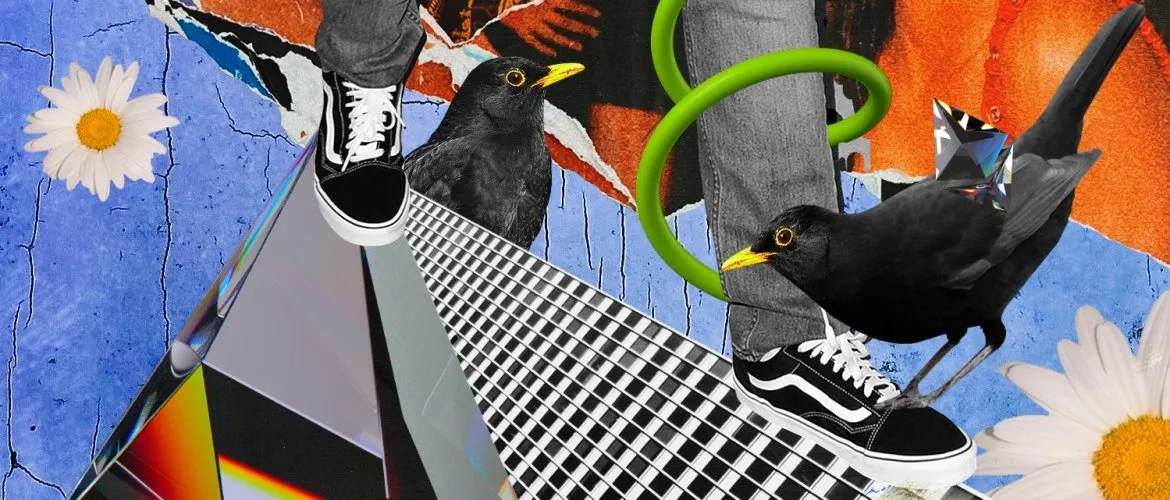
Watch where you step!
Climbing to the top of a skyscraper in a pair of sneakers and peering over the edge while the wind whips through your hair isn’t what most people would like to do for work.
For artist Isaac Wright, it is precisely where he wants to be.
Better known as Driftershoots, Wright has made headlines for his photography collection, Where My Vans Go. The collection features 117 images he created over three years of exploring the United States.
What makes them unique is that they are all taken from ridiculously high up. Just a glimpse of his photos will make your stomach drop. From such heights, the buildings look like matchsticks, and with his sneakers just barely in the frame (Vans, of course), it makes the viewer feel as if they are right there with him on the edge of the building.
If you’d like to add one of his shots to your collection, the floor price (as of this writing) is 44 ETH.
The Intersection of Cryptocurrency and Art
The crypto universe has collided with the art world, and an explosion of stars is underway.
Simply put, crypto art is art in a digital form. It includes photography, GIFs, music, video, VR dreamscapes, or programmable art, to name a few.
Crypto art is typically digital artwork, but it can also be physical art tracked in a blockchain ecosystem. This art is verified by using a non-fungible token (NFT). NFTs serve as proof of authenticity. Blockchain helps to prove ownership, and forgery is nearly impossible.
Pak, a crypto artist whose identity has been shrouded in mystery, has been active in the digital art world for two decades. Last year on Nifty Gateway, Pak sold an NFT for $91.8 million.
The sale was divided by 28,000 buyers, each of whom now own a sliver of this precious piece of art. Even more compelling, these individual owners could combine their pieces into a single NFT that could be sold to a single buyer—further flipping the art world on its head and redefining what it means to own art.
Pak is also the creator of Archillect, “An AI created to discover and share stimulating visual content over social media channels. She is a living inspiration archive. She is a digital muse.”
Unlikely Paths to NFT Superstardom
Not every artist currently at the top of the crypto art world set out on that path initially.
Artist Mike Winklemann, known as Beeple, started out designing corporate websites. He then began a project he called “Everydays” where he created a new animation every day using a program called Cinema 4D.
He kept this up, not missing a day, and eventually began getting calls from Louis Vuitton and Apple. Last year he sold an NFT at a Christie’s auction for $69 million. As stated on his website, he’s not stopping until he gets in the Museum of Modern Art (MOMA)…then he’s not stopping until he gets kicked out of the MOMA.
Humor abounds in crypto art. Bored Apes Yacht Club (BAYC) is an NFT collection that has grabbed the attention of the tech community and celebrities alike.
All the apes are different, with some are rarer than others. Owning one can be seen as a status symbol (they each cost about 94 ETH), but ownership also grants entry into a special club. Club members get special access to online perks or join actual meetups. One such meetup recently transpired in New York City, and featured an appearance by Chris Rock.
Traditional artists have also found a place in the crypto art world. Meredith Marsone, an oil painter from New Zealand, moved into the NFT space early. Her portraits are stunning, and they define “disrupted realism.”
In addition to her oil paintings, she sells her artwork on Makersplace. She has done so since 2018, making her an early adopter of NFTs.
Thanks to Crypto, Digital Art Continues to Evolve
Thirty years ago, street art and graffiti art allowed artists anonymity. Crypto art also provides this.
The crypto art scene has democratized the art world; technology has allowed artists to get their work in front of a new audience. It’s up to the artist to decide where they want their art, and if they will remain anonymous or not.
Artists are in control.
Crypto art continues to push the boundaries of the art world, attracting new buyers. Artists ready to embrace this new technology may discover that they already have a fanbase waiting for their next incredible creation.
About Kit

Kit Campoy is a former retail professional turned freelance writer. She writes about Leadership, Retail, and Web3. Contact Kit for your content needs.

